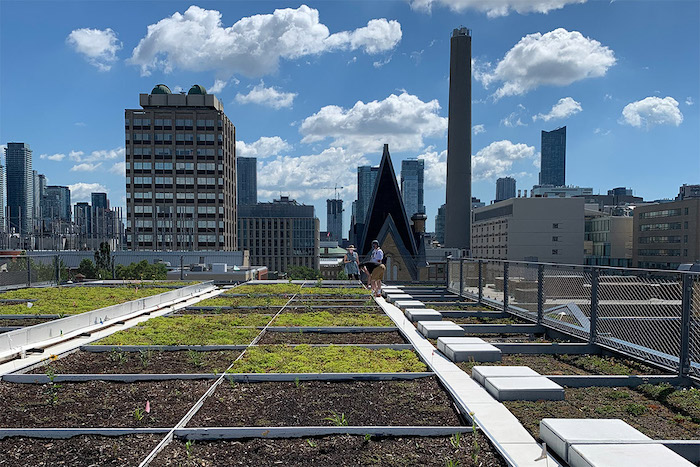
U of T engineering students learn to design green roofs
January 19, 2021
By CCE
The program will train more than 50 students and researchers.
The University of Toronto (U of T) has begun teaching engineering students, among others, how to design, construct and manage green roofs and other engineered vegetative systems—a.k.a. ‘living infrastructure’—for cities facing the impacts of climate change and urbanization.
The Green Roof Innovation Testing (GRIT) Laboratory at U of T’s John H. Daniels Faculty of Architecture, Landscape and Design recently launched the Design of Living Infrastructure for Ecosystem Services (DLIFES) Network, a five-year Natural Sciences and Engineering Research Council (NSERC) Collaborative Research and Training Experience (CREATE) program that will train more than 50 undergraduate, master and PhD students and post-doctoral researchers.
One of the leaders of the lab, incidentally, is Faculty of Applied Science & Engineering associate professor Jennifer Drake, P.Eng., repeat member of the jury for the Canadian Consulting Engineering Awards.
“This program offers the specialized and practical field-based training that is currently lacking and absolutely critical as technologies and new regulations are rapidly changing,” she says. “For example, the 2017 federal budget designated upwards of $20 billion in green infrastructure projects over the next decade.”
“Governments and private property owners are investing heavily in living infrastructure to address current and future challenges of environmental degradation, pollution, habitat loss and extreme climate events,” says Liat Margolis, associate professor of landscape architecture and one of the other leaders of the lab. “This presents a tremendous opportunity to develop 21st-century approaches to education and professional practice that are interdisciplinary by nature, empirical, hands-on and engaged with urban policy and industry practices.”
Launched last summer, the DLIFES Network extends to academic partners at U of T’s Scarborough campus, Toronto’s Ryerson University, Halifax’s Saint Mary’s University (SMU) an Saskatoon’s University of Saskatchewan, with further collaboration reaching eight other universities in the U.S., France, Israel, Australia and Japan, all known for their own green infrastructure labs. The NSERC funding provides opportunities for Canadian engineering, forestry, landscape architecture and biology students for research exchange abroad.
Areas of focus so far have included soil design for bio-retention, green roof growth media and subsurface urban hydrology. Over the next four years, the program’s coursework will cover a range of technical aspects related to landscape design and construction, plant biology and ecology, soil physics and bio-material sourcing and processing, stormwater management (SWM), treatment and reuse, sensor instrumentation design and data visualization.
